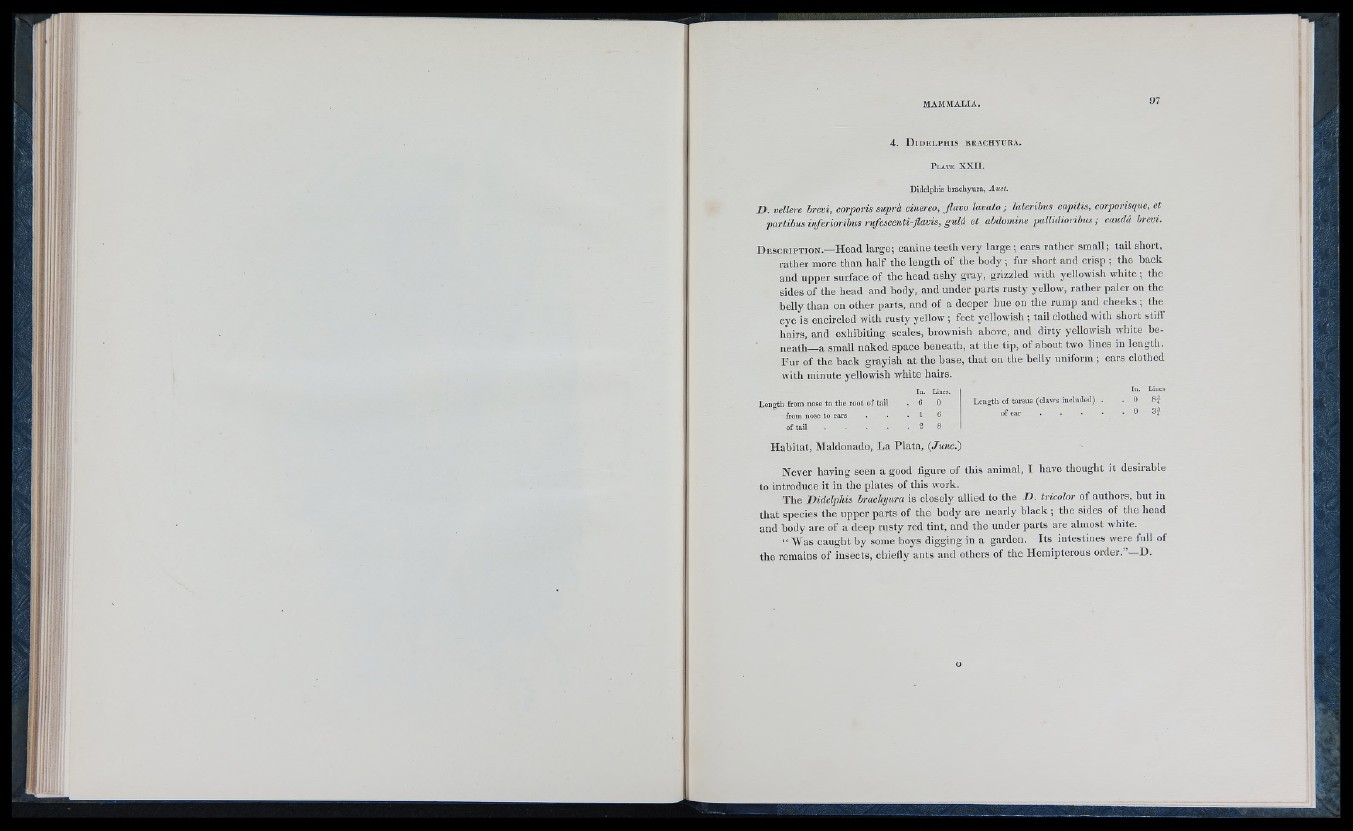
M AM M A LIA .
4. D id e l p h i s b r a c h y u r a .
Didelphis brachyura, Axict.
D . vellere brevi, corporis svprà cinereo, flavo lavato; lateribus capitis, corporisque, et
partibus inferioribus rufescenti-jiavis, i là et abdomine pallidioribus ; cauda brevi.
D e s c r i p t i o n . — Head large; canine teeth very large; ears rather small; tail short,
rather more than half the length of the body; fur short and crisp ; the back
and upper surface of the head ashy gray, grizzled with yellowish white ; the
sides of the head and body, and under parts rusty yellow, rather paler on the
belly than on other parts, and of a deeper hue on the rump and cheeks; the
eye is encircled with rusty yellow ; feet yellowish ; tail clothed with short stiff
hairs, and exhibiting scales, brownish above, and dirty yellowish white beneath—
a small naked space beneath, at the tip, of about two lines in length.
Fur of the back grayish at the base, that on the belly uniform ; ears clothed
with minute yellowish white hairs.
Length from nose to the root of tail
from nose to ears
of tail .
In . L ines.
6 0 Length of tarsus (claws included) .
of ear
L in e s 8*
H
Habitat, Maldonado, La Plata, (Jtme.)
Never having seen a good figure of this animal, I have thought it desirable
to introduce it in the plates of this work.
The Didelphis hrmhxjura is closely allied to the D . tricolor of authors, but in
that species the upper parts of the body are nearly black; the sides of the head
and body are of a deep rusty red tint, and the under parts are almost white.
“ Was caught by some boys digging in a garden. Its intestines were full of
the remains of insects, chiefly ants and others of the Hemipterous order.”—D.